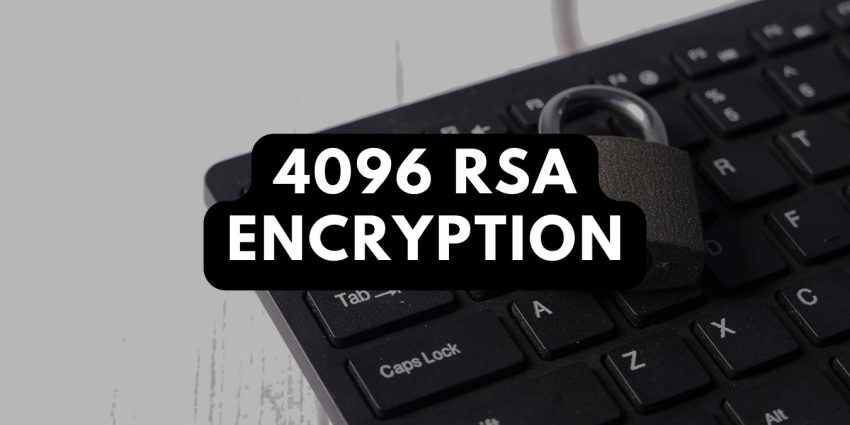The 2048-bit key has been used worldwide for years now and is still considered moderately strong. But as technology progresses, the OpSec world needs to adjust regularly. Cybercrimes, fraud, and LE have all found ways to attack 2048-bit key systems. This forces us to up our security game. RSA keys, which are used in data encryption, need to be future-proofed and therefore need an overhaul. Is it time to consider doubling up on our defence? Should we start using 4096-bit RSA Keys? Let’s find that out together.
Understanding RSA Keys
Let’s first take a look at what an RSA Key is. In short, RSA keys are a public key encryption algorithm used within the cryptosystem. RSA keys come in pairs, a public key for encryption and a private key for data decryption, which are used to generate digital signatures for users.
RSA is most commonly used in the creation of an SSL/TLS session to provide users with security as they browse the internet.
Typical RSA Key use cases include
- Public and private key generation
- SSL certificates
- VPN client connection
- TLS handshakes
- Message Encryption (similar to PGP)
Since its release, RSA keys have increased in size and strength. Here’s a list of RSA Keys and their strengths:

- 1023 Bit: This key length used to be common but is now out of date and considered to be ineffective as a security key.
- 2048 Bits: Known as the most widely used key length, the 2048-bit key still provides moderate security due to advances in computing power. While still commonly used, it’s gradually being phased out for more secure keys.
- 3072 Bits: Another strong key. It’s a good compromise between security and performance, suitable for many scenarios.
- 4096 Bits: This is currently considered one of the strongest key lengths for RSA encryption. It offers a high level of security and is recommended for most critical applications.
You can get keys with even larger lengths, like 7680-bit keys or 15360-bit keys. Unfortunately, these keys require vast amounts of computing power and might slow down the efficiency of your applications, so 4096-bit keys are the number one recommendation these days.
What is a 4096 RSA Key?
In an RSA key, the number represents the size of the key. So, that means that the 4096 in a 4096-bit key is 4096 bits long and comprises only prime numbers. Looking at the key length above, you can see that a 4096-bit RSA key is exactly double the length of a 2048-bit key, which has been the most common key used for encrypting data.
The 4096-bit key has the potential to generate far more unique keys than the 2048-bit key. This makes it a lot more challenging for Darknet hackers and cyberattackers to decrypt and steal information from anyone using this key. 2048-bit keys were the primary choice until now as they don’t require as much computing power. But in recent years, the computing world has grown rapidly, making it much easier to jump on board with 4096-bit systems.
Should We Start Using 4096-bit RSA keys?
So, should we start using a 4096-bit key now, or are we safe for a few more years? According to statistics, the 2048-bit key still provides users with a suitable amount of security. However, with the increase in technology, the standard for RSA key strengths is also ever-increasing. According to experts, 2048 keys will no longer be of use by the year 2030.
Here’s a reference to go off for security strength on RSA key length and when they will be phased out:
| Strength | Key length | Acceptable/disallowed |
|---|---|---|
| 80 | 1024 | Disallowed 2030-31 |
| 112 | 2038 | Disallowed 2030-31 |
| 128 | 3072 | Acceptable |
| 192 | 7680 | Acceptable |
| 256 | 15360 | Acceptable |
A NIST special publication doesn’t mention the use of 4096-bit keys; that said, with the 3072 key being acceptable, we can assume that the 4096-bit key will be of greater use. For now, the 2048-bit key is sufficient for many cases. But if you feel the need to up your security and your PC can comfortably cope with running a 4096-bit key, then why not? The more security, the better, right?
It’s the sort of OpSec you should expect from a Darknet Market admin side of things.
Frequently Asked Questions
Yes, there are several stronger RSA keys that you can use. But keep in mind that as you increase the key size, you might have better security and encryption, but the load required for your PC to run will be greater, which might affect performance.
While the concept is straightforward, upgrading to 4096-bit keys does require some effort, especially in systems with many existing keys. It involves generating new key pairs, distributing the public keys, and updating configurations. However, the security benefits make this effort worthwhile.
No encryption method is entirely immune to attacks, but a longer key length significantly raises the bar for attackers, making it more difficult to decrypt. As of now, the computational effort required to break a 4096-bit RSA key is considered extremely challenging with our level of current technology. However, the answer to this might change within a few years.

